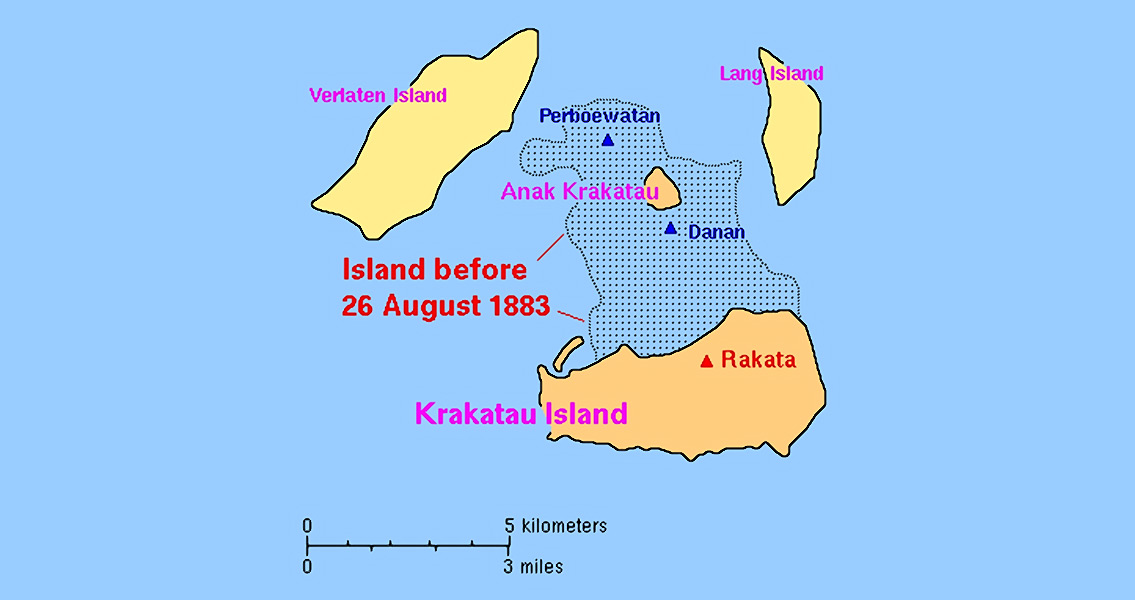<![CDATA[On Sunday 26th August, 1883, at 12:53pm, a massive volcanic explosion at Mount Krakatoa launched a cloud of gas and debris 24 km into the sky. The eruption marked the start of one of the worst natural disasters in recent history, one which devastated the surrounding region and impacted upon the whole planet. Since May 1883, the captains of ships passing the island located in the Sunda Strait between Java and Sumatra had been reporting strange geological activity around Krakatoa. The captain of the German warship Elizabeth noted seeing an 11 km cloud of dust and ash above the uninhabited island. Reports of strange smoke and loud noises continued to be made in the region, while the inhabitants of nearby islands started to hold festivals and celebrations for the unusual flames which had started to illuminate the sky. The eruption of Sunday 26th August, 1883, had an explosive force equivalent to 200 megatons of TNT. It burst the magma chamber under the island, allowing sea water to mix with lava. The seawater instantly boiled, creating superheated steam which launched pyroclastic flows across distances of 25 km at a speed of 100 kph. Eruptions continued throughout the day, building in intensity and emitting volcanic gases which killed victims in western Java and Sumatra. On the morning of Monday 27th the eruption climaxed with four massive explosions which eventually blew apart the 9 km long and 5 km wide island. The final eruption was so ferocious that it could be heard on the other side of the Indian Ocean on the island of Rodriguez, 4,500 km away, and in Perth, Australia, some 3,500 km away. In total, over two-thirds of the island sank to a depth of over 250 m below sea level. As the island crashed into the sea, the true human cost of the eruption became apparent. A 120 m high tidal wave was created which smothered nearby islands. Coastal towns of Java and Sumatra were also decimated by the huge waves, which upended huge coral blocks from the sea bed and smashed them onto the shore. At least 36,147 people were killed by the volcanic eruption, most by the tsunamis on the 27th August. 165 coastal villages were completely annihilated. Beyond the tragic death toll from the Tsunami, the true power of the Krakatoa eruption can also be seen in its effects around the world. Volcanic ash reached as far away as Singapore 840 km to the north and Keeling island 1155km to the south-west. Every barograph on the planet registered the passage of the atmospheric pressure wave resulting from the eruption, sometimes up to seven times as the shockwave bounced back and forth around the globe for five days after the main explosion. Forty-five cubic kilometres of debris were thrown into the sky by the eruption, meaning daylight did not return to the region surrounding the volcano for three days. A darkening of the sky was also reported up to 275km from Krakatoa. Sulphur dioxide and other gases launched into the sky began to get trapped in the atmosphere, creating a sunlight filter around the planet. As a result, the average global temperature was on average 1.2 degrees cooler over the next five years, while the atmospheric effects created unusual, dazzling sunsets as far away as Europe and the United States. ]]>
Krakatoa Eruption Starts
